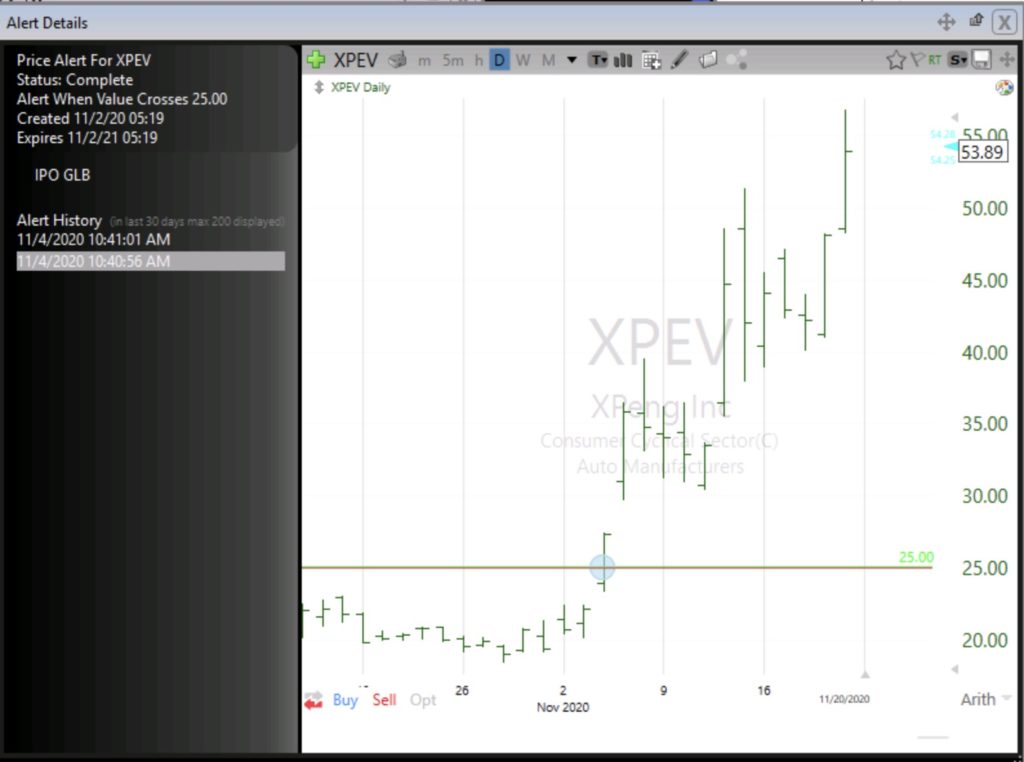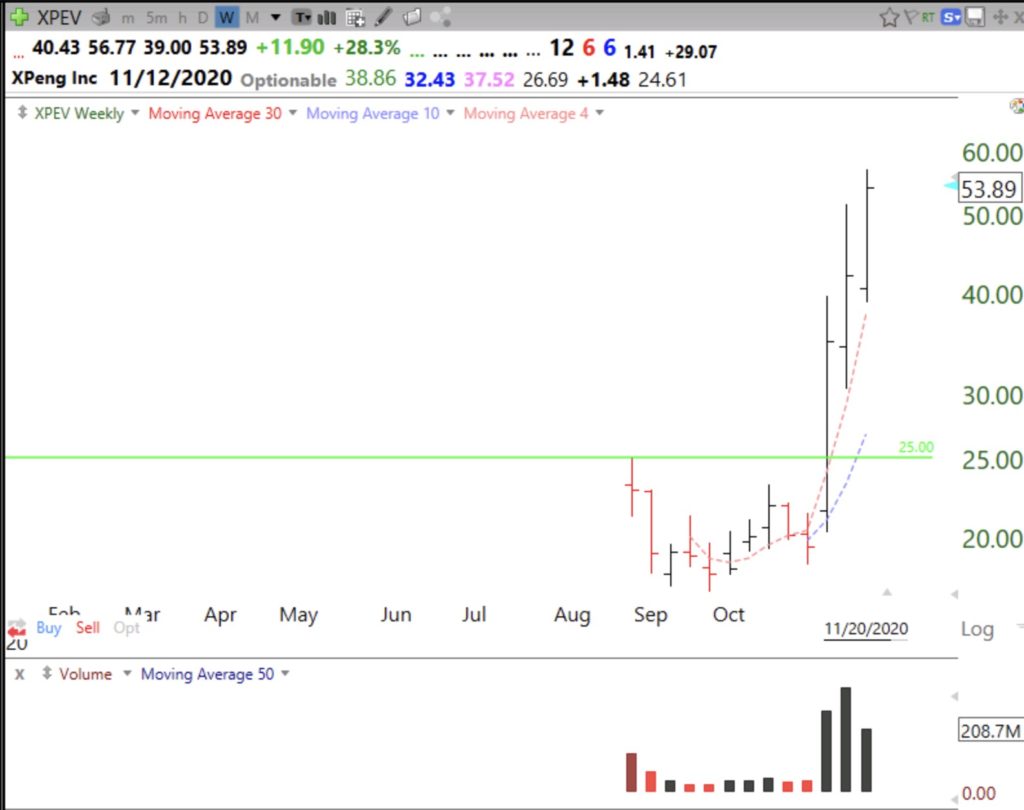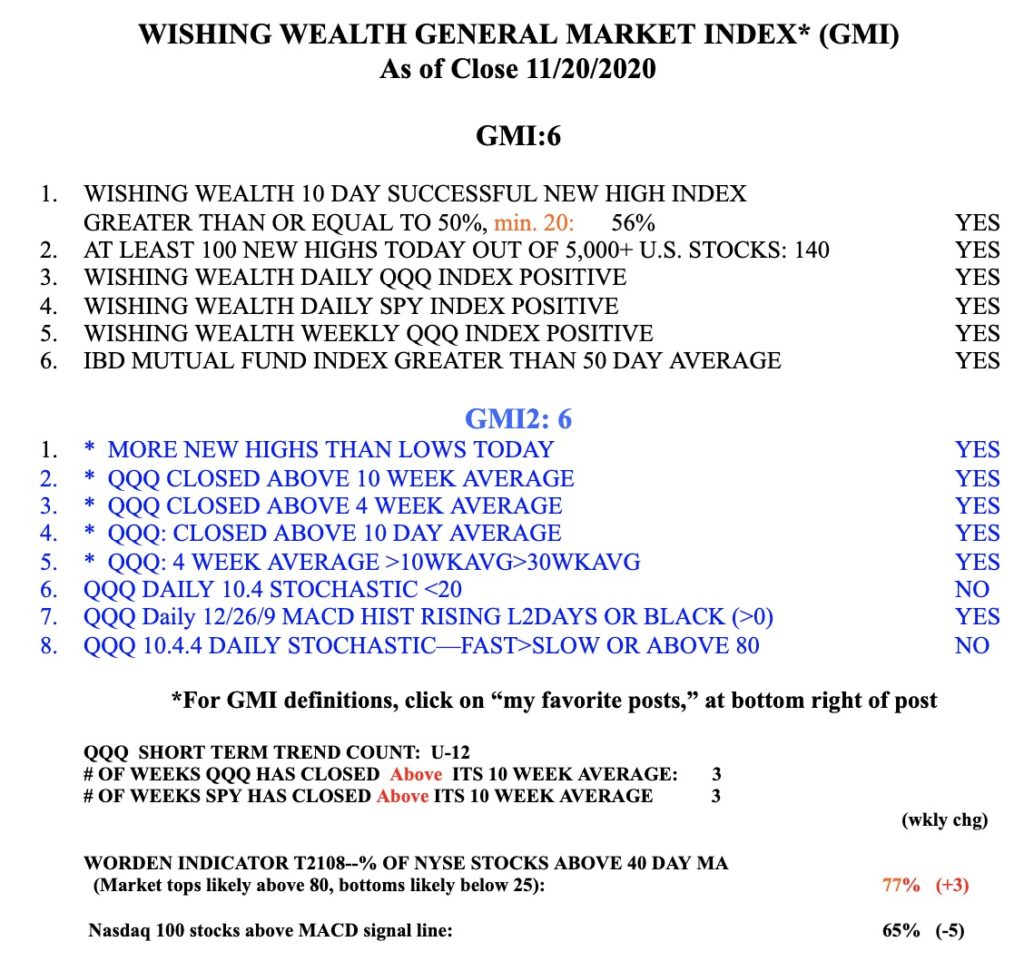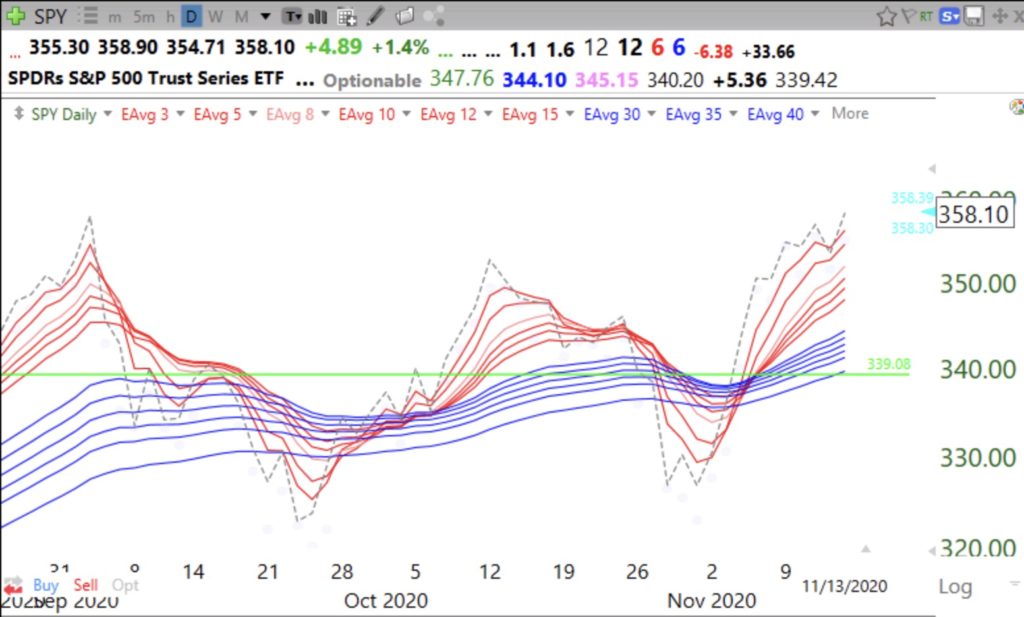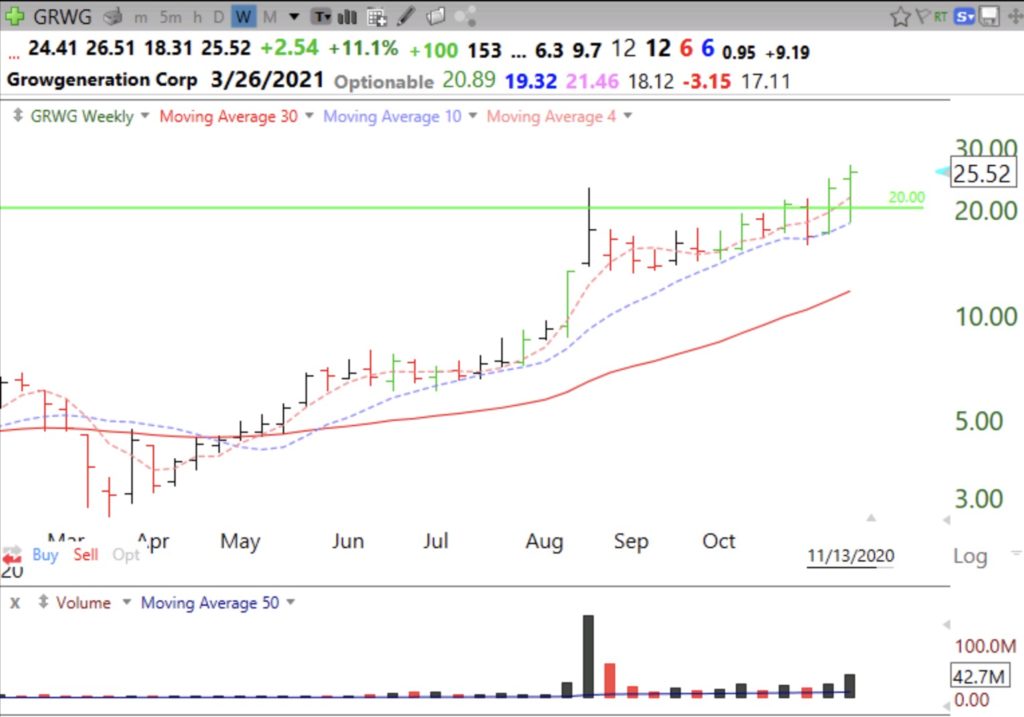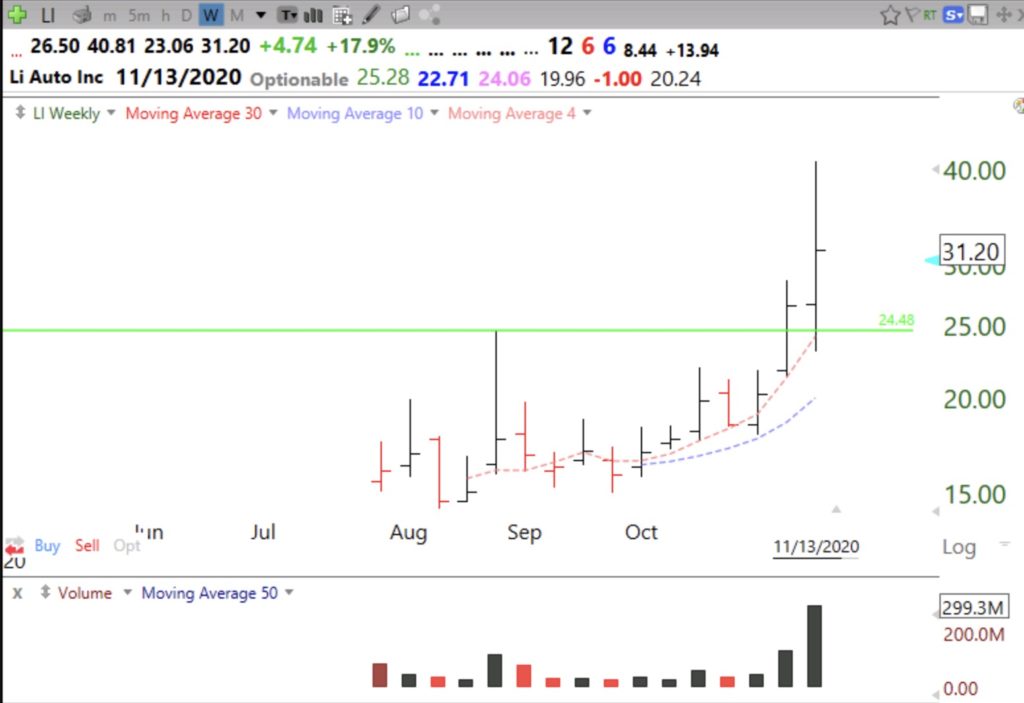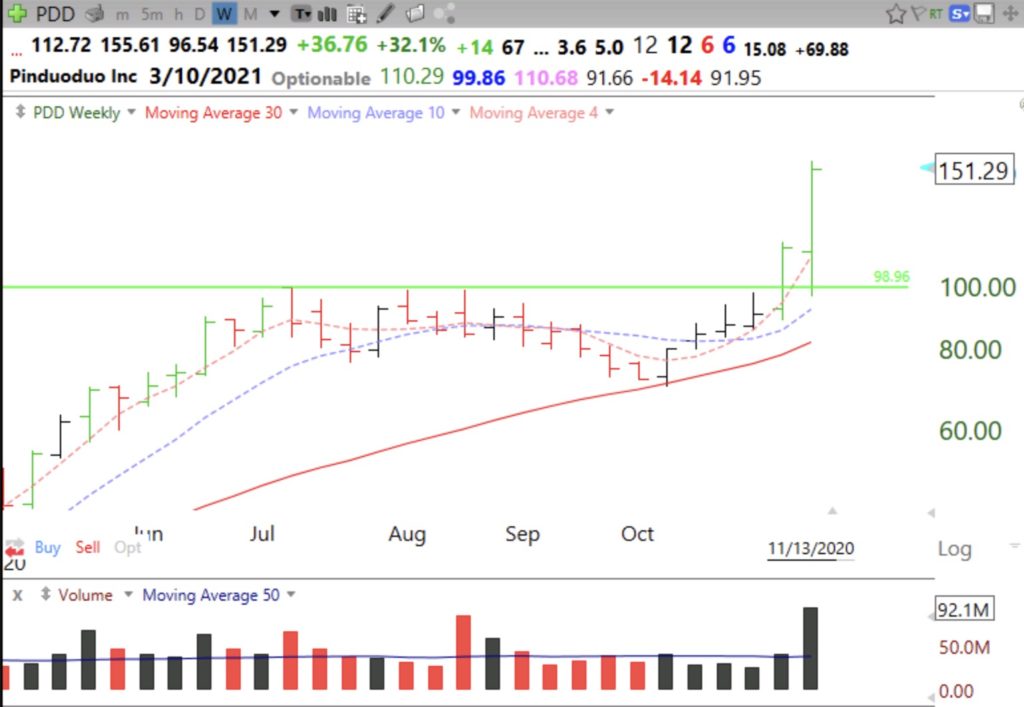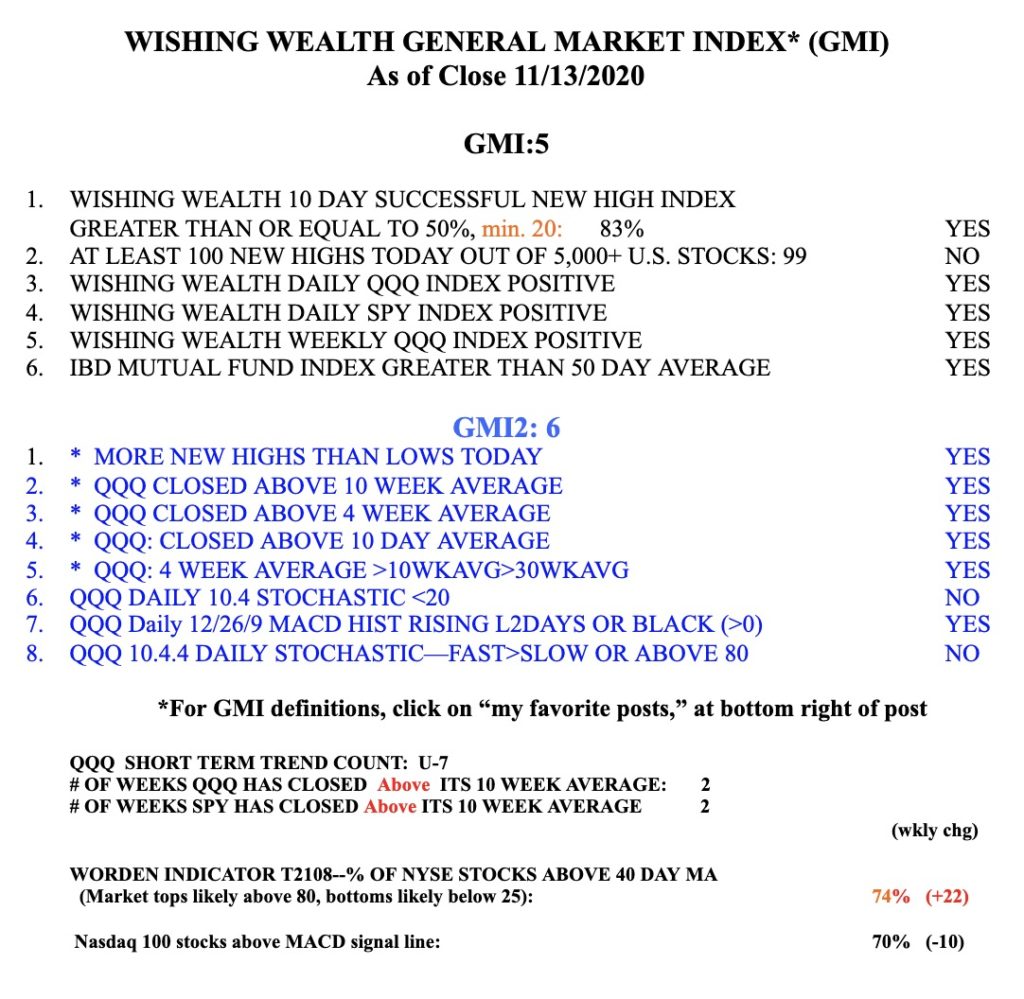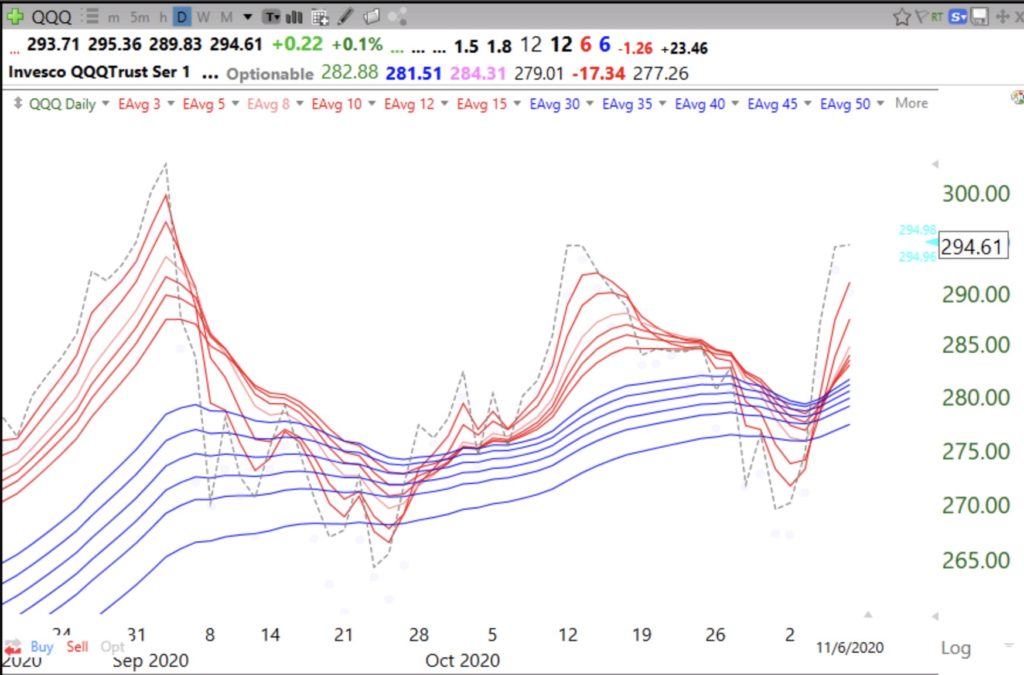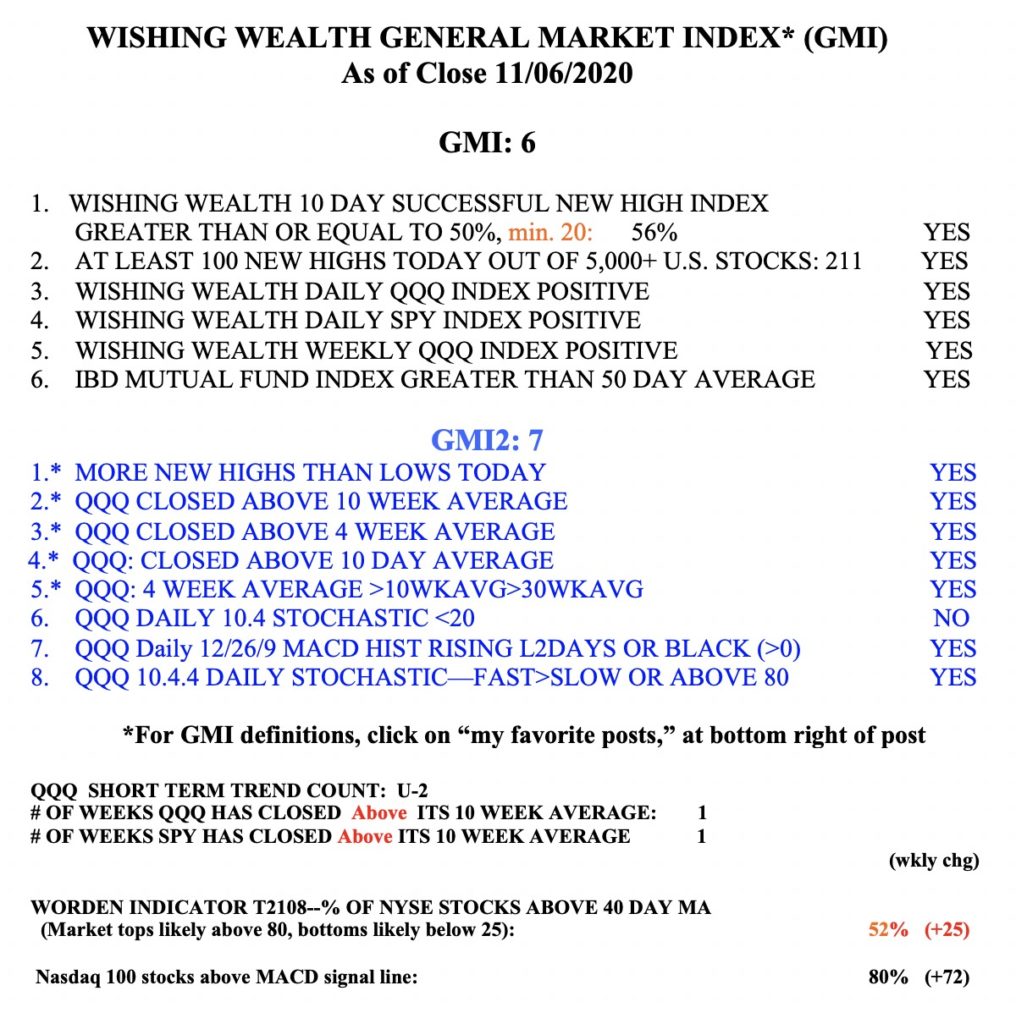My co-instructor, David, repeatedly reminds me that I say that a green line is supposed to be drawn only after an ATH has not been surpassed for at least 3 months. However, I do make an exception and often draw a green line sooner when it is an IPO. While looking at some recent IPOs I noticed that XPEV had formed a top at $25, had then rested, and was approaching its former peak. I drew a green line at $25 on November 2 and placed an alert in TC2000 to tell me the first time that XPEV traded above the green line ($25). I labeled the alert “IPO GLB” (green line break-out). The alert was triggered 2 days later, on 11/4 and when I saw the huge volume buzz I purchased XPEV around 25.50. I also had checked MarketSmith and seen triple digit sales increases in XPEV, which made me more confident to make the trade. People who follow my twitter account (@Wishingwealth) also received a tweet about this GLB as soon as I received the alert. Below is the TC2000 alert log and the daily chart showing what happened after the alert.
Here is the weekly chart. It often pays to buy IPOs that have a GLB. XPEV broke out during its 11th week after going public. Note the surge in trading volume on XPEV.
The GMI remains Green and my accounts are largely invested long.
